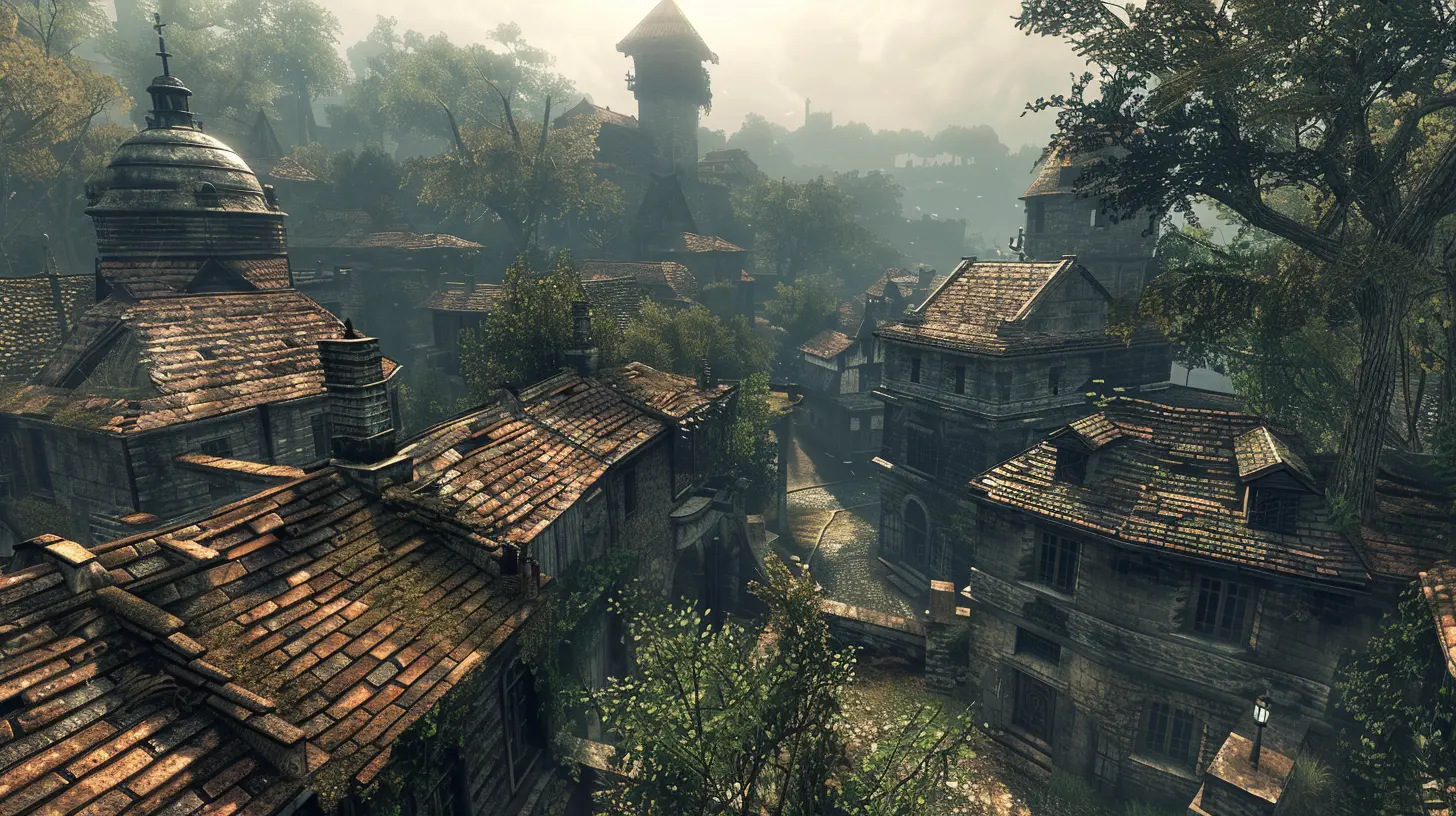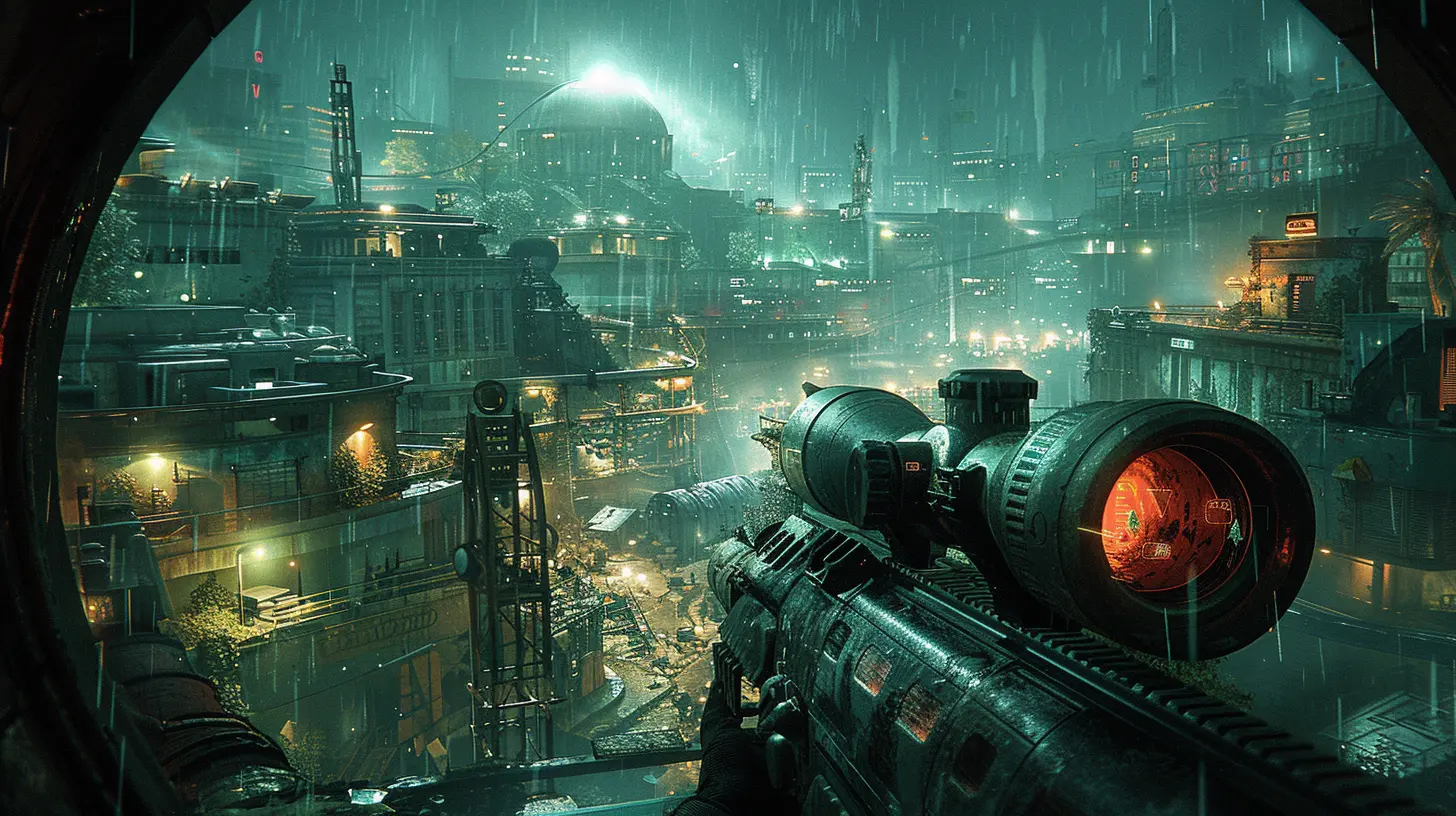What Makes a Great FPS Map Design?
22 November 2025
Let’s be honest, we’ve all been there—spawning into a multiplayer first-person shooter (FPS) match, immediately getting lost, and dying five seconds later because you had no idea where the enemy would come from. Yep, bad map design. It’s the silent killer of gaming experiences and the reason some games win the esports crown while others flop like a fish out of water. But what actually makes a great FPS map design? Is it just about aesthetics, or is there more science (and a little magic) involved? Buckle up, because we’re diving into the nitty-gritty of what separates memorable FPS maps from the ones we’d rather uninstall.

It’s All About Flow (Seriously, Flow!)
Ever notice how on great maps, you always end up with adrenaline-pumping moments? That’s flow, baby! A well-designed map nudges players into creating action-packed scenarios without them even realizing it. It’s like a good roller coaster—you don’t want to be stuck on a flat track for too long, right? A good FPS map ensures that players are in the thick of the action without being overwhelmed.Flow comes from the way paths, chokepoints, and open spaces are interwoven. Great maps balance moments of tension and release. For instance, think about Dust 2 in Counter-Strike. You’ve got chokepoints like the bombsites (high tension), but also safe-ish spots where you can regroup or plan your next move (release). This balance keeps the game from feeling like a chaotic mess where you’re constantly looking over your shoulder in fear of a random headshot.
Pro Tip: Chokepoints Are Key (But Don’t Overdo It!)
Chokepoints are like the seasoning in your FPS map recipe. Toss in too few, and the map feels bland; toss in too many, and it’s unplayable. Good designers strategically place chokepoints where teams are likely to clash, creating high-stakes battles. But they also scatter alternative routes so players can outsmart the opposition. Without options, players will feel trapped—and let’s be real, no one likes a map that feels like they’re stuck in an escape room with no exit.
Balance Makes the Dream Work
Okay, quick hypothetical: You’re on a map with one huge tower in the middle, and whoever gets up there can snipe everyone else with zero competition. Fun? Not really. That’s a classic case of bad balance. A great FPS map spreads power across the playfield. It gives each area its own tactical significance without letting one dominate the entire game.Let’s take Halo’s Lockout as an example. Sure, there’s high ground, but it’s not the end-all-be-all. Lower areas are still valuable for sneaky plays or flanking. The map doesn’t favor one playstyle, making it equally enjoyable for snipers, rushers, and strategy nerds.
Balance also applies to spawn points. Poorly placed spawns can ruin games faster than a rogue cheater. Nobody wants to get spawn-killed over and over again—it’s like being forced to relive a nightmare on loop.
Spawn Smarts: The Golden Rule
Great FPS maps ensure no player spawns directly in danger. Spawns should offer enough breathing room for players to orient themselves. However, if spawns are too far away from the action, people might get bored running halfway across the map just to be gunned down.
Variety = Spice of Life
Who doesn’t love a little variety? Great FPS maps cater to different playstyles and weapons. You’ve got your tight corridors for shotgun fans, open spaces for snipers, and flanking routes for stealth players. A well-designed map feels like a buffet—there’s a little something for everyone.Take Overwatch’s King’s Row, for instance. You’ve got a mix of wide streets for big team fights, narrow alleys for sneaky DPS plays, and vertical spaces for characters like Widowmaker or Pharah. It doesn’t pigeonhole players into one strategy, keeping things fresh and exciting.
And hey, variety isn’t just about the layout; it’s about pacing too. A great map mixes fast-paced, chaotic areas with slower, more tactical zones to create a rollercoaster of emotions. It’s like being in an action movie, with moments of quiet tension building up to epic explosions of adrenaline.

Verticality Is Underrated
Flat maps are boring—there, I said it. Verticality adds an entirely new layer of strategy (literally). Players need to think in three dimensions, considering not just what’s in front of them, but also what’s above and below. This opens up opportunities for clever plays, like dropping on unsuspecting enemies or using the high ground for a tactical advantage (Obi-Wan Kenobi would approve).Call of Duty’s Nuketown is a simple map with some verticality, but even those second-story windows add an extra layer of tension. Do you stay on the ground and push forward or risk climbing up for a better view? Decisions, decisions.
However, verticality needs to be used wisely. Too much can make maps confusing or too hard to navigate. It’s all about balance. Think of it as adding chili flakes to your pizza—you want just enough to enhance the flavor, but not so much that your mouth feels like a volcano.
Personality and Theme Matter More Than You Think
Let’s face it, looks matter. A map’s aesthetic is like its personality—it’s what makes it memorable. Why else do we still remember classics like Quake’s The Longest Yard or Team Fortress 2’s 2Fort? They’re not just fun to play; they’re iconic.A great theme gives the map character. Whether it’s a crumbling castle, a futuristic spaceship, or a post-apocalyptic wasteland, the setting should draw players in and immerse them. And don’t just slap on pretty textures—theme and gameplay should complement each other. A snowy map might have slippery surfaces or reduced visibility, while a jungle map might include dense foliage for ambushes.
Good themes also help with navigation. Ever gotten lost on a map where every corner looks the same? That’s just frustrating. Designers use visuals, landmarks, and color schemes to guide players intuitively. For example, one side of the map might have a red tower, while the other has a blue bunker, giving players a sense of direction without needing a GPS.
Playtesting: The Unsung Hero of Map Design
Here’s the truth: No map is perfect on the first try. Playtesting is where the real magic happens. It’s the equivalent of taste-testing a new recipe before serving it to guests. Developers rely on feedback to tweak spawn points, adjust sightlines, and balance gameplay. And you know what? We, the players, are part of that process. By providing feedback, we help shape these virtual battlegrounds into masterpieces.Even the best designers need multiple iterations to get things right. That’s why games with dedicated level editors (looking at you, Halo Forge) are so loved by the community. If something feels “off” about a map, the players can often fix it themselves—or at least point out the problem for developers to handle.
The Secret Sauce: Emotion
Ultimately, a great FPS map isn’t just about technical stuff—it’s about how it makes players feel. Does it create those “holy crap, did you see that?!” moments? Does it get your heart pounding during a clutch 1v1? A truly great map sticks in your brain because of the memories you made there, not just because of its layout.That’s why classics like Battlefield’s Operation Metro or Call of Duty’s Shipment are so beloved. They evoke strong emotions—whether it’s the sheer chaos of a small map or the epic scale of a large one. It’s all about crafting an experience that players want to come back to again and again.
Wrapping It Up: What Makes a Great FPS Map Design?
A great FPS map is like a well-oiled machine—it’s all about balance, flow, variety, and just the right dash of personality. It needs to cater to different playstyles, keep the action flowing, and immerse players in a memorable setting. Whether it’s a high-stakes chokepoint or a sneaky side path, every element contributes to the overall experience. And when it all comes together, it’s gaming magic.So next time you load into a map, take a moment to appreciate the thought and effort that went into its design. After all, behind every incredible headshot or clutch win is a map that made it possible.
all images in this post were generated using AI tools
Category:
First Person ShooterAuthor:

Kaitlyn Pace

